How to Grow Guava from Fruit: A Beginner’s Guide to Sprouting Seeds
- March 1, 2024
- 0 comment
Guava, a tropical fruit native to Mexico, Central America, and South America, is renowned for its unique flavor and numerous health benefits. Growing guava trees from fruit at home can be a rewarding experience for garden enthusiasts. This guide will walk you through the process from seed extraction to fruit-bearing.
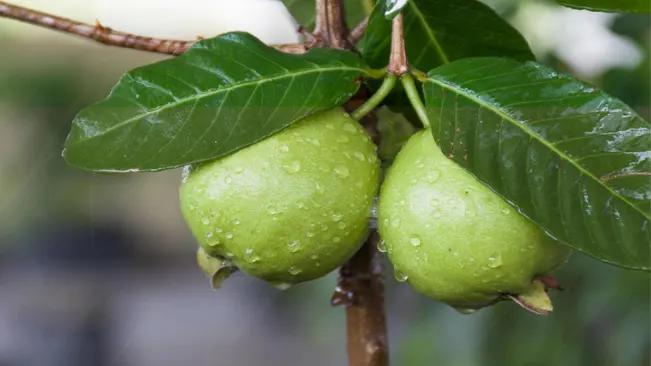
Nutritional Benefits of Guava
| Benefit | Description |
|---|---|
| Rich in Nutrients | Guava is packed with essential vitamins and minerals, including Vitamin C, potassium, and fiber. |
| Antioxidant Properties | Contains antioxidants, such as lycopene and Vitamin C, which fight free radicals and prevent oxidative stress. |
| Boosts Immune System | High Vitamin C content strengthens the immune system, reducing the risk of infections and illnesses. |
| Improves Heart Health | Helps lower blood pressure and bad cholesterol levels, contributing to a healthier heart. |
| Aids Digestion | High in dietary fiber, guava promotes healthy digestion and can prevent constipation. |
| Diabetes-Friendly | The low glycemic index and high fiber content make it a good fruit choice for diabetics. |
| Improves Skin Health | Vitamins, such as Vitamin A and Vitamin C, and antioxidants in guava are beneficial for skin health. |
| Weight Loss Friendly | Low in calories and high in fiber, it can be a satisfying snack that supports weight management. |
| Enhances Vision Health | Vitamin A in guava helps maintain good eyesight and prevents the degradation of eyesight with age. |
| Cancer Prevention | Antioxidants like lycopene may reduce the risk of certain cancers. |
| Reduces Stress | Magnesium in guavas can help relax muscles and nerves, thereby reducing stress. |
Before diving into planting, it’s important to understand that guava (Psidium guajava) prefers warm climates. It thrives in USDA zones 9-11, requiring full sun and well-draining soil. The tree is relatively drought-tolerant but produces best with regular watering.
List on How To Grow Guava From Fruit
- Seed Extraction and Preparation
- Germination
- Seedling Care
- Planting Outdoors
- Ongoing Care
- Patience and Harvest
Seed Extraction and Preparation
Selecting a Ripe Guava
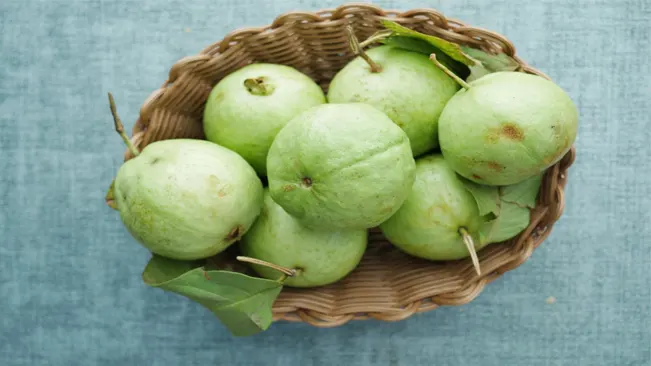
- Importance of Ripeness: The ripeness of the guava is crucial for the viability of the seeds. Ripe guavas ensure that the seeds have reached a stage where they can germinate effectively.
- How to Identify: A ripe guava is usually soft to the touch, and its color changes from green to a yellowish hue, depending on the variety. The aroma is another key indicator – a ripe guava emits a strong, sweet, and pleasant fragrance.
- Pro Tips: Avoid fruits that are overly soft, bruised, or showing signs of rot, as their seeds may not be viable. Also, consider using a guava that you particularly enjoy, as the seeds will likely produce a similar variety.
Extracting Seeds
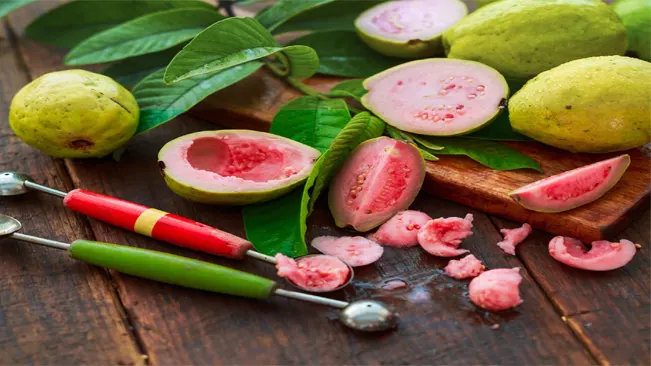
- Cutting the Fruit: Cut the guava in half to expose the seeds. It’s advisable to use a sharp knife for a clean cut, which makes extracting the seeds easier.
- Scooping Out the Seeds: Using a spoon or your fingers, gently scoop out the seeds. Be careful not to crush them, as damaged seeds may not germinate.
- Cleaning the Seeds: Wash the seeds under running water to remove all the pulp and fruit residues. This step is important to prevent fungal growth or rot during the drying and germination process.
- Pro Tips: Some growers prefer to ferment the seeds for a day or two in water, similar to tomato seed preparation. This can help remove pulp and potentially improve germination rates.
Drying the Seeds
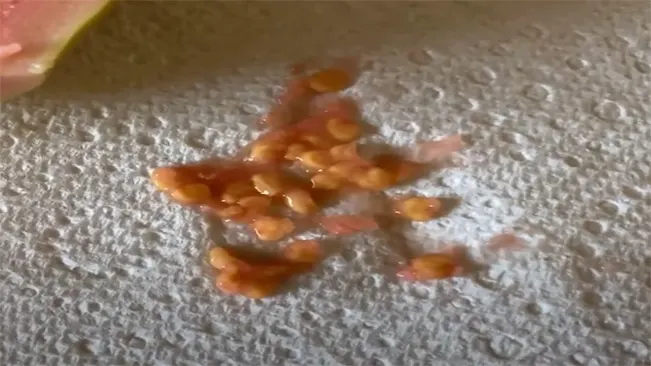
- Spreading for Drying: Lay the seeds out on a paper towel or a clean cloth in a single layer. Make sure they are not clumped together to ensure even drying.
- Duration: Let the seeds dry for a few days, but not too long as overly dry seeds might lose viability. The ideal time can vary, but it generally ranges from 1 to 3 days depending on the climate and humidity.
- Ideal Conditions: Choose a warm, airy location for drying but avoid direct sunlight as it can be too harsh and may damage the seeds.
- Pro Tips: Check the seeds daily. They should feel dry to the touch but not shriveled. If you’re in a particularly humid environment, consider using a dehumidifier or an indoor space with controlled humidity.
Germination
Prepare the Soil
When preparing the soil for guava seed germination, the goal is to create an environment conducive to seedling growth. The soil mix should be light and porous to allow for good aeration and drainage, which are crucial for preventing root rot.
- Soil Composition: A mix of potting soil and compost is ideal. The potting soil provides structure, while the compost offers nutrients. You can also consider adding perlite or vermiculite to improve drainage.
- Container Selection: Choose a container with drainage holes to prevent waterlogging. The size of the container depends on how many seeds you’re planting. Each seed should have enough space to grow without being overcrowded.
- pH Level: Guava generally prefers slightly acidic to neutral soil (pH 6.0 to 7.0). You can test the pH of your soil mix and adjust it if necessary.
Plant the Seeds
Planting the seeds at the correct depth is important for successful germination.
- Seed Depth: Plant the seeds about ¼ inch deep. This depth provides the seeds with enough soil cover to retain moisture but is shallow enough for the seedlings to break through easily.
- Spacing: If planting multiple seeds in one container, space them at least 2 inches apart. This spacing gives each seedling enough room to grow without competing for nutrients and light.
- Labeling: If you’re planting different varieties of guava, label each container. This will help you identify and provide the right care as they grow.
Maintain Moisture and Warmth
The right moisture and temperature are critical for germination.
- Watering: Keep the soil consistently moist but not waterlogged. Overwatering can lead to fungal issues and seed rot. Use a spray bottle for gentle watering that doesn’t disturb the seeds.
- Temperature: Guava seeds germinate best at warm temperatures, ideally between 75°F and 85°F (24°C and 29°C). You can use a heat mat under the container to maintain a consistent temperature, especially if you’re germinating seeds in a cooler environment.
- Light: Initially, direct sunlight isn’t necessary and can even be harmful. Place the container in a location with indirect sunlight or under a grow light. Once the seedlings emerge, they will need more light.
Seedling Care
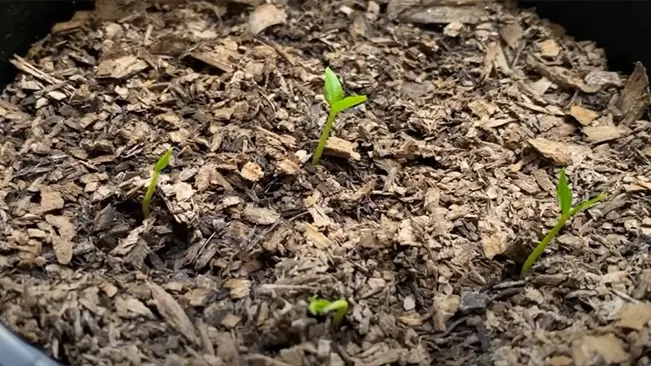
Germination Period
- Duration: Guava seeds typically take between 3 to 10 weeks to germinate. This period can vary based on factors like seed freshness, temperature, and humidity levels.
- Maintaining Ideal Conditions: During this time, it’s crucial to keep the soil consistently moist but not waterlogged. Overwatering can cause the seeds to rot, while under-watering might prevent germination.
- Temperature: A warm environment is favorable for guava seed germination. Ideally, maintain a temperature around 70-85°F (21-29°C). If you’re in a cooler climate, consider using a heat mat to maintain a consistent temperature.
- Check for Mold: Watch out for any signs of mold or fungal growth due to excess moisture. If you notice mold, reduce watering and improve air circulation.
Sunlight Exposure
- Initial Protection: When the seeds first sprout, they should be protected from direct sunlight, which can be too intense for delicate seedlings.
- Gradual Introduction to Sunlight: Gradually expose the seedlings to more sunlight over a period of a few weeks. This process, known as “hardening off,” helps the seedlings adjust to the outdoor environment and reduces shock.
- Indirect Light: Start with a few hours of indirect light daily, gradually increasing exposure to direct sunlight.
Transplanting
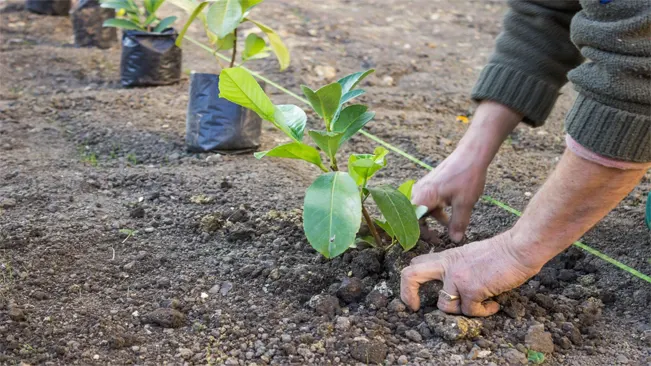
- Right Time to Transplant: When seedlings are about 3-6 inches tall and have developed several true leaves (the leaves that appear after the initial sprout leaves), they are ready to be transplanted.
- Preparing for Transplant: Before transplanting, water the seedlings well. This makes the transplant process less stressful for the plant.
- Selecting Pots: Use pots that are large enough to accommodate the growing roots, typically at least 12 inches in diameter, with good drainage.
- Soil Requirements: Transplant the seedlings into a potting mix that’s well-draining and rich in organic matter. You can use a mix similar to what you used for germination, but with a bit more body, like added compost or loam.
- Transplanting Process: Carefully remove the seedling from its original container, trying not to disturb the roots too much. Place it in the new pot and fill around it with soil, gently firming down.
- Aftercare: After transplanting, water the seedlings well and place them in a location where they receive adequate sunlight but are protected from harsh conditions. Continue to monitor moisture and adjust watering as needed.
Planting Outdoors
Choose the Right Time

- Understanding Frost Dates: It’s crucial to plant your guava tree when there’s no risk of frost. Frost can damage young, tender plants. Typically, this period is in the late spring or early summer. The exact timing can vary based on your geographic location. It’s a good idea to check local frost dates or consult with a local nursery.
- Temperature Considerations: Guava trees thrive in warm temperatures. The ideal planting time is when the soil has warmed up and the ambient temperature consistently stays above 50°F (10°C).
Select the Location
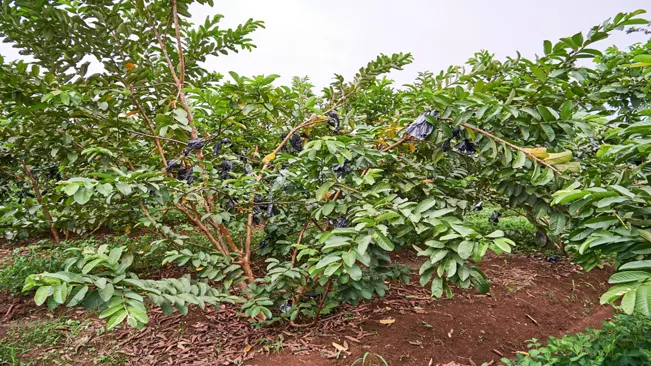
- Sunlight Requirements: Guava trees require full sun, meaning at least 6-8 hours of direct sunlight each day. This is crucial for the tree’s growth and fruit development.
- Soil Type: Well-draining soil is essential to prevent waterlogging, which can lead to root rot. Guava trees can adapt to different soil types but prefer a slightly acidic to neutral pH. If your soil is heavy clay or too sandy, amend it with organic matter like compost.
- Space Around the Tree: Ensure there is enough space for the tree to grow. Guava trees can reach heights of 20 feet or more and spread wide. They should be planted at least 10-15 feet away from other trees or structures.
Planting
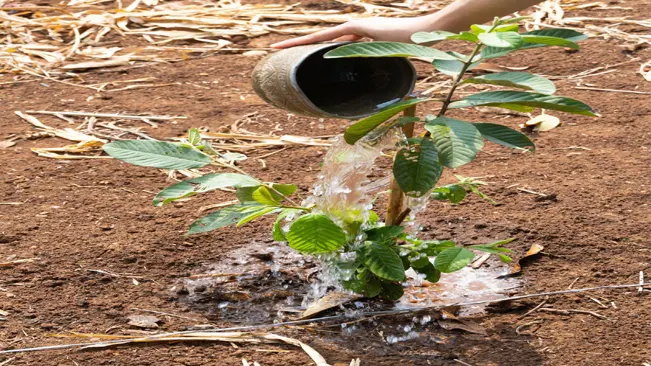
- Preparing the Hole: Dig a hole that is twice as wide as the root ball of your guava tree. This extra space allows the roots to spread out easily and access the nutrients in the soil.
- Planting Depth: Place the tree in the hole so that the top of the root ball is level with the ground surface. Planting too deep can stress the tree and slow its growth.
- Backfilling the Hole: Fill the hole with the removed soil, gently tamping down as you go to remove air pockets. You can mix in some compost with the soil to provide additional nutrients.
- Watering: After planting, water the tree thoroughly to settle the soil around the roots. This initial watering is crucial for establishing good contact between the roots and the soil.
- Mulching: Apply a layer of organic mulch around the base of the tree, keeping it a few inches away from the trunk. Mulch helps retain soil moisture, suppresses weeds, and gradually adds nutrients to the soil as it decomposes.
Ongoing Care
Watering
Proper watering is key to the healthy growth and fruit production of guava trees. Here are some detailed tips:
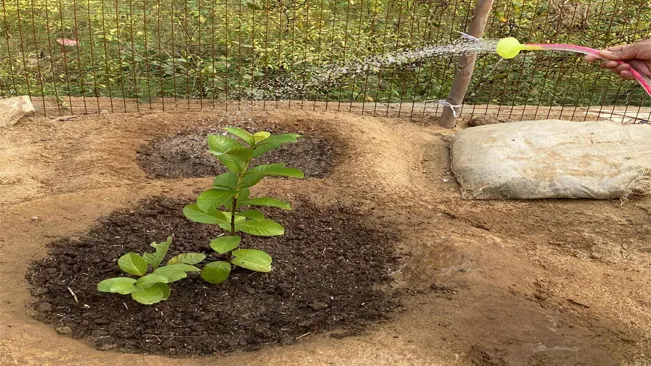
- Frequency and Amount: Young guava trees require consistent moisture. Water them regularly, ensuring the soil is moist but not soggy. As the tree matures, it becomes more drought-tolerant but still benefits from regular watering. The frequency depends on the climate and weather conditions. In hotter periods, more frequent watering may be needed.
- Method: Deep watering is beneficial. This means watering slowly and deeply, allowing the moisture to reach the roots rather than just wetting the surface.
- Monitoring Soil Moisture: Check the soil moisture regularly. The top inch of soil should be dry before you water again. Over-watering can lead to root rot, while under-watering can stress the plant.
Fertilizing
Fertilization provides necessary nutrients for the guava tree’s growth and fruit production:
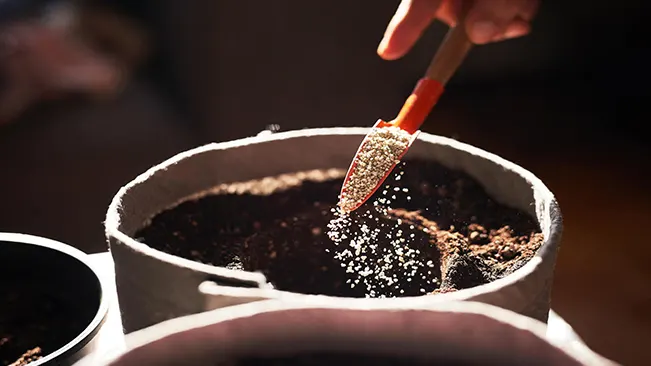
- Type of Fertilizer: A balanced fertilizer, typically one with equal parts nitrogen, phosphorus, and potassium (such as a 10-10-10 formula), is suitable for guava trees. Organic options like compost or aged manure can also be beneficial.
- Frequency: Fertilize the guava tree every 1-2 months during the growing season. Avoid fertilizing in the winter when the tree’s growth slows down.
- Application Method: Apply the fertilizer around the base of the tree, following the manufacturer’s instructions. Be sure to water the tree after fertilizing to help distribute the nutrients.
Pruning
Pruning is essential for maintaining the health and productivity of the guava tree:
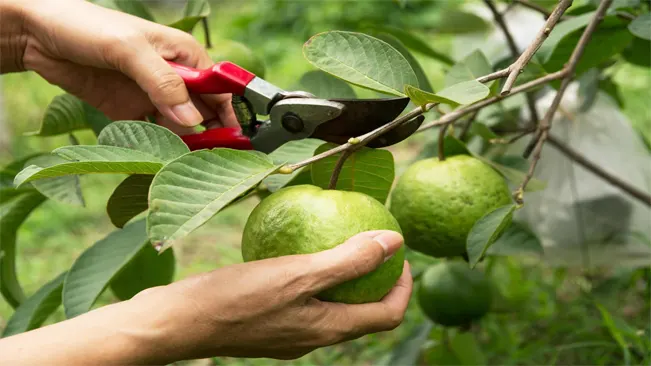
- When to Prune: The best time for pruning is after the harvest or in early spring before new growth starts.
- Objective: The goal is to remove dead or diseased branches, open up the canopy for better light and air circulation, and maintain the desired shape.
- Technique: Use clean, sharp pruning tools. Make clean cuts at a 45-degree angle, and avoid leaving stubs as they can attract pests and diseases.
Pest and Disease Control
Guava trees can be susceptible to pests and diseases, but regular monitoring and appropriate measures can manage them effectively:
- Common Pests: Look out for fruit flies, guava moth, and aphids. These can be controlled using organic methods like neem oil or insecticidal soap, or chemical pesticides when necessary.
- Disease Prevention: Diseases like guava rust or anthracnose can be prevented by ensuring good air circulation through pruning and keeping the area around the tree clean.
- Regular Inspection: Regularly inspect your guava tree for signs of pests or diseases. Early detection is key to effective control.
Patience and Harvest
Guava trees grown from seed can take a few years to bear fruit. When the guavas are soft and have a sweet aroma, they are ready to harvest.
Patience in Growing Guava from Seed
Growing guava trees from seed is a process that requires patience for several reasons:
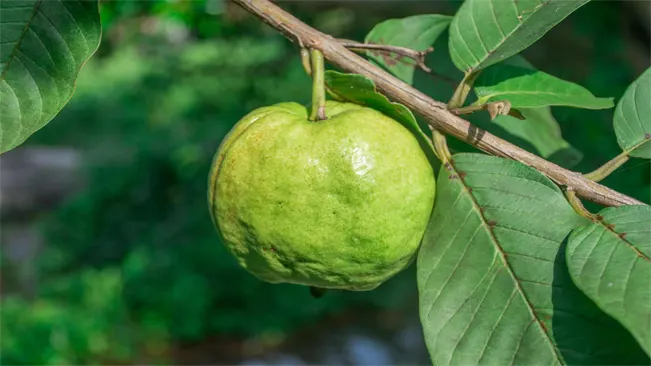
- Time to Germination: As previously mentioned, guava seeds can take 3-10 weeks just to germinate. The germination rate can vary, and not all seeds may sprout, so patience is key during this initial phase.
- Growth Rate: Once the seeds have sprouted, guava seedlings grow at a moderate pace. They need time to develop a strong root system and healthy foliage before they can support fruit production.
- Maturation Period: Guava trees grown from seed typically take 3-8 years to start bearing fruit. This time frame can vary based on factors like the variety of guava, growing conditions, and care provided.
- Environmental Factors: Factors such as climate, soil quality, water availability, and sunlight play a crucial role in the growth of the guava tree. Some of these factors are beyond the gardener’s control and require patience and adaptability.
Harvesting Guava Fruit
When it comes to harvesting, understanding when guavas are ripe is crucial:
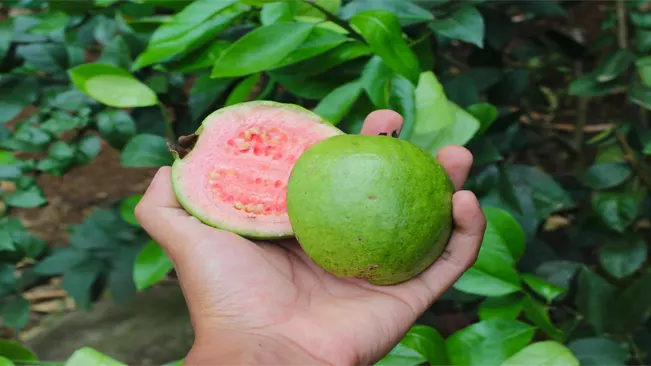
- Indicators of Ripeness: Ripe guavas typically emit a sweet, fragrant aroma. The fruit also becomes softer to the touch. The skin color may change, often becoming more yellowish, but this can depend on the variety.
- Taste Test: If you’re unsure about the ripeness, you can do a taste test. A ripe guava should be sweet with a slight tartness.
- Harvesting Method: To harvest, gently twist the fruit off the tree or use pruning shears to cut the stem. Be careful not to damage the branch or the fruit.
- Regular Checks: Once the guavas start to ripen, check your tree every few days. Guavas ripen quickly and can go from perfect to overripe in a short time.
- Staggered Ripening: Not all fruits on the tree will ripen at the same time, so you may have a prolonged harvest period.
Post-Harvest
- After harvesting, guavas can be eaten fresh, made into jams or jellies, or used in various recipes. They don’t have a long shelf life, so it’s best to consume or process them soon after picking.
Conclusion
Growing guava from fruit is a journey of patience and care. With the right conditions and attention, you can enjoy homegrown guavas, adding a tropical flair to your garden and diet. Remember, every guava tree is unique, and growing them from seed can result in varying fruit qualities. Embrace the process and enjoy the fruits of your labor!
FAQs (Frequently Asked Questions)
- Can I grow guava from store-bought fruit?
- Yes, you can grow guava from the seeds of store-bought fruit. Just ensure the fruit is ripe and healthy.
- Yes, you can grow guava from the seeds of store-bought fruit. Just ensure the fruit is ripe and healthy.
- How long does it take for a guava seed to germinate?
- Guava seeds typically take 3 to 10 weeks to germinate, depending on the conditions such as temperature and humidity.
- Guava seeds typically take 3 to 10 weeks to germinate, depending on the conditions such as temperature and humidity.
- Do guava trees need full sun to grow?
- Yes, guava trees thrive in full sun. They require at least 6 to 8 hours of direct sunlight daily for optimal growth.
- Yes, guava trees thrive in full sun. They require at least 6 to 8 hours of direct sunlight daily for optimal growth.
- What kind of soil is best for growing guava?
- Guava trees prefer well-draining soil with a mix of potting soil and compost. They can tolerate a range of soil types but do best in slightly acidic to neutral pH levels.
- Guava trees prefer well-draining soil with a mix of potting soil and compost. They can tolerate a range of soil types but do best in slightly acidic to neutral pH levels.
- How often should I water my guava tree?
- Young guava trees need consistent moisture and should be watered regularly. Mature trees are more drought-tolerant but benefit from regular watering, especially during dry periods.
- Young guava trees need consistent moisture and should be watered regularly. Mature trees are more drought-tolerant but benefit from regular watering, especially during dry periods.
- When is the best time to plant guava trees outdoors?
- The best time to plant guava trees outdoors is in the spring or early summer when the risk of frost has passed.
- The best time to plant guava trees outdoors is in the spring or early summer when the risk of frost has passed.
- How do I protect my guava tree from pests and diseases?
- Regularly inspect your guava tree for signs of pests and diseases. Use organic or chemical treatments as needed. Proper pruning, sanitation, and well-balanced fertilization can also help prevent problems.
- Regularly inspect your guava tree for signs of pests and diseases. Use organic or chemical treatments as needed. Proper pruning, sanitation, and well-balanced fertilization can also help prevent problems.
- Can guava trees be grown in pots?
- Yes, guava trees can be grown in large pots with adequate drainage. This is ideal for regions with colder climates where the tree can be moved indoors during winter.
- Yes, guava trees can be grown in large pots with adequate drainage. This is ideal for regions with colder climates where the tree can be moved indoors during winter.
- When will my guava tree start bearing fruit?
- Guava trees grown from seed can take 3 to 8 years to bear fruit, depending on the variety and growing conditions.
- Guava trees grown from seed can take 3 to 8 years to bear fruit, depending on the variety and growing conditions.
- How do I prune a guava tree?
- Prune your guava tree to remove dead or diseased branches, to shape the tree, and to allow sunlight and air to penetrate the canopy. Pruning is best done after harvesting or before spring growth.

Kristine Moore
Forestry AuthorI'm Kristine Moore, a seasoned garden landscaping professional with over 30 years of experience. My extensive career has been dedicated to transforming outdoor spaces into stunning, sustainable landscapes. With a deep understanding of horticulture, design principles, and environmental stewardship, I have become a respected figure in the field, known for creating harmonious, visually appealing, and eco-friendly gardens. My commitment to excellence and continuous learning in landscaping trends and techniques has solidified my reputation as an expert in garden design and implementation.


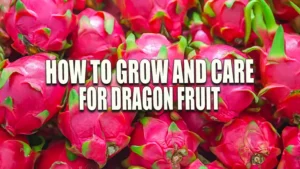

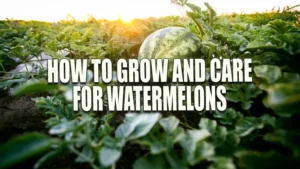







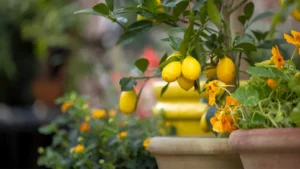
Leave your comment